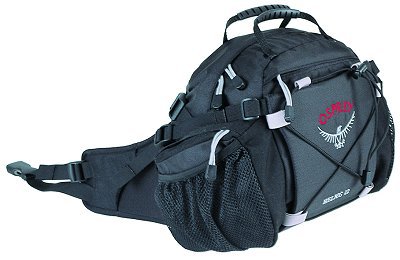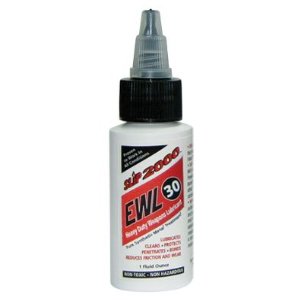Written by: Greg Ellifritz
Most people who are interested in personal preparedness understand and embrace the idea of the “Bug-Out-Bag”, a backpack kept full of survival supplies that you can instantly grab if you have to flee your home during an emergency (see yesterday’s article). The Bug-Out-Bag is a great concept, one I advocate for everyone (see my previous article for details), but it is only part of the solution for true emergency preparedness.
In talking with some smart friends, both in person and online, I realized I had a hole in my survival plans. My Bug-Out-Bag was packed and ready to go, but what happens if the emergency occurred when I wasn’t at home? What if I had to get home (potentially on foot) after a major emergency? Think about all the people fleeing the collapsing buildings after 9/11 or the people stuck away from home in Haiti after the earthquake when all the roads were destroyed. Would you be able to make it home safely under the most trying circumstances with the equipment you have on your person or in your car right now?
Thus was born the idea of the “Get Home” bag. It’s a smaller emergency kit capable of sustaining you for a couple of days if necessary no matter what horrible event may be occurring in the world. The “Get Home Bag” (GHB), should be portable enough to carry on your person or in your car and light enough so that you can travel fast. Think of it as a mini Bug Out Bag.
For my bag, I chose something that didn’t appear threatening or militaristic as I don’t want to draw attention to myself in an emergency. I want to be as low profile as possible, not wanting to look like a threat, an occupying force, or someone who has a lot of stuff to steal. Because of that, I chose the Osprey Helios Lumbar pack, something you might more likely see on a hiker than a soldier. The Helios has ample room and can be carried like a briefcase, slung over the shoulder, or strapped around the waist if you want your hands free. Mine is in a neutral gray and blue color that wouldn’t attract much attention on anyone wearing it in public. It’s roomy and holds just the right amount of stuff to get me home. It has currently been discontinued, but you can likely find something very similar in looks and function.
Here are the contents of my bag and why I think they are important. Remember, I am trying to be a generalist here…preparing for any possible emergency with a minimal amount of gear. Undoubtedly, there are better single items for a more purposeful use, but I want a small amount of gear that will get me by no matter what is going on. I want to be ready for a terrorist attack, EMP event, natural disaster, or even if my car breaks down far from home. Here’s what I carry:
2- 20oz bottles of water in outside pockets
Gerber Multi-Tool in sheath attached to shoulder strap
10 safety pins attached to zipper (multiple uses, for fastening, fishhooks, shelter fabrication, or splinter removal…safety pins are light and take up no space. Include a lot of them in your kit)
Weapons:
Strider Fixed blade Knife
Ka-Bar LDK knife (for more “covert” protection)
Tear gas grenade (if I get caught up in a riot and need to disperse a crowd)
Why no guns? Since I am always armed with at least one pistol on my person, and carry a spare locked in a safe in the car, I didn’t feel the need for a third in the bag. The bag is unsecured in the cargo area in my car. There’s a chance it might get stolen. I don’t want to arm a criminal with my pistol.
Food, cooking and water purification:
Food is overemphasized in many survival texts. I didn’t include much here because I can live without it for a long while. Water is crucial. You must have a way to purify water or cook acquired food in a more long-term emergency.
3 Powerbar “Performance” bars- won’t melt in the heat
1 “Frontier” water filter straw...light cheap and effective water filtration
1 bottle of water purification tablets
“Sierra” steel cup/bowl for boiling water, cooking, or drinking
Esbit folding pocket stove with 3 fuel tabs
Large piece of aluminum foil that can be used for cooking, making a bowl, or signaling
Fire Making Materials:
Windproof lighter
Waterproof/Windproof matches
Magnesium firestarter
2 packages “EZ-Fire” tinder material
Shelter Making Materials:
Mini folding pocket saw
50′ of Paracord
rain poncho
trash bag
silver “space” blanket
SOL Emergency Bivy (space blanket on steroids)
2 yard “flat pack” of duct tape
Light and signaling:
LED Headlamp (if you don’t have a dozen headlamps you are missing out. These things are essential! It’s the only way to survive long term power outages! You strap it on your head and you don’t have to hold a flashlight. Walk, read, cook, whatever…it’s the only way to go!)
Blue LED light
Streamlight Scorpion tactical flashlight
Extra batteries for each
Loud signal whistle
Mirror
Medical Supplies:
Blister kit (Blisto-Ban)…I may be walking a lot
10 band aids
2 Triangular bandages (for wound packing, bandage creation, burn wrapping, tourniquets or slings)
Military trauma dressing
4 Imodium tablets (for diarrhea)
2 Levofloxacin broad spectrum antibiotic pills
4 Ibuprofen tablets
4 Benedryl antihistamine tablets (for allergic reactions, sneezing, or sedation)
6 caffeine pills (for energy to walk, stay up late, or to combat coffee withdrawal)
2 wound cleaning wipes
2 hand sanitizing wipes
finger scalpel
1 package antibiotic cream
miniature tweezers
small bottle of eye drops
Miscellaneous Gear:
Mini am/fm radio (with headphones) for emergency news updates
Compass
Camouflage bandanna (for head cover, water filter, dust mask, etc)
Pen and note pad
small sample size package of gun oil (for firearm lubrication or fire starting)
10 pack of antibacterial baby wipes (for body cleaning, toilet paper, etc)
1 pair spare merino wool socks
Small compass
Each of these subcategories are packed in their own ziplock bags (which have additional uses). The entire kit (including the water, gun and spare ammo) weighs 13 pounds.





